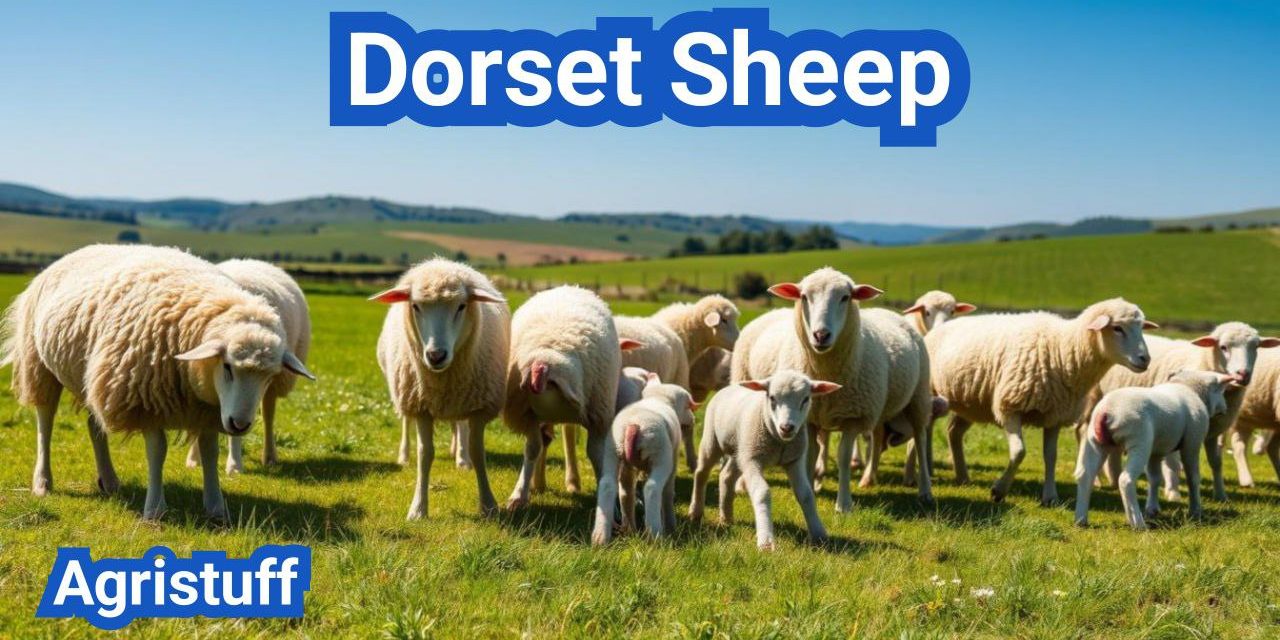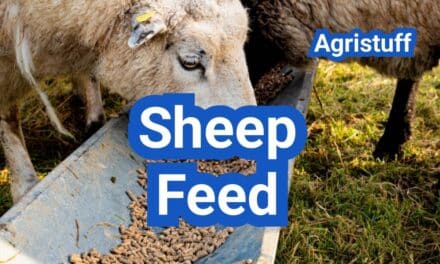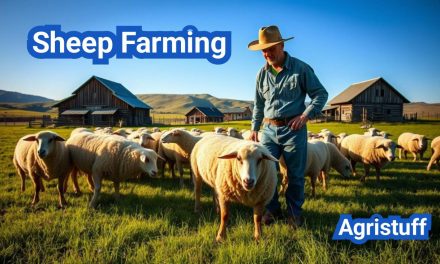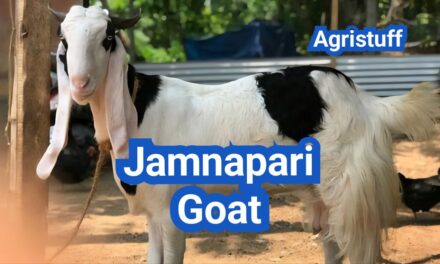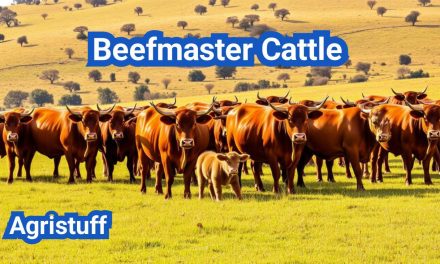The Dorset Sheep is a versatile and valuable breed in the sheep farming industry, known for its exceptional ability to lamb throughout the year. This characteristic makes it an attractive choice for farmers seeking to maximize their production.
Originating from ancient British stock, the Dorset Sheep is recognized for its white wool and is considered an endangered breed. Its ability to lamb year-round is a significant advantage, allowing farmers to have a consistent supply of lambs for meat production.
This breed’s unique characteristics and origins make it a fascinating subject for those interested in sheep farming and the history behind different breeds.
Key Takeaways
- The Dorset Sheep is known for its year-round lambing ability.
- It is an ancient breed with origins in Britain.
- The breed is valued for its white wool and meat production.
- Dorset Sheep are considered an endangered breed.
- Their ability to lamb year-round makes them valuable for farmers.
The Origin and History of Dorset Sheep
The Dorset Sheep breed has a rich history that spans centuries, originating in Southwest England. This region’s mild climate and lush pastures provided an ideal environment for the development of a hardy and prolific breed.
Ancient Beginnings in Southwest England
The history of Dorset Sheep is deeply rooted in the agricultural traditions of Southwest England. The breed’s early development is closely tied to the local farming practices and the need for a sheep that could thrive in the region’s maritime climate.
As noted by agricultural historians, the early Dorset Sheep were valued for their ability to lamb out of season, a trait that would become a hallmark of the modern breed.
“The Dorset Horn, with its ability to lamb at any time of the year, was a valuable asset to farmers, allowing for a consistent supply of lamb throughout the year.”
Development of the Modern Dorset Breed
The modern Dorset breed has undergone significant development since its early days. The establishment of the Dorset Horn Sheep Breeders’ Association in 1891 marked a pivotal point in the breed’s history, as it led to a more standardized breeding program.
| Year | Event | Significance |
|---|---|---|
| 1891 | Establishment of the Dorset Horn Sheep Breeders’ Association | Standardization of the breed |
| Early 20th Century | Introduction of Dorset Sheep to North America | Global spread of the breed |
Introduction to North America and Global Spread
Dorset Sheep were introduced to North America in the early 20th century, where they quickly gained popularity among farmers for their hardiness and reproductive capabilities. The breed’s global spread was facilitated by its adaptability to various climates and farming systems.
Key factors in the global spread of Dorset Sheep include:
- Adaptability to different climates
- Prolific breeding capabilities
- Hardiness and disease resistance
The Dorset Sheep breed continues to be an important part of global agriculture, valued for its unique characteristics and contributions to sustainable farming practices.
Understanding Dorset Sheep Characteristics

Dorset Sheep possess a unique combination of physical and behavioral traits that set them apart from other breeds. Their characteristics make them an attractive choice for farmers worldwide.
Physical Appearance and Size
Dorset Sheep are known for their medium size and robust build. They have a good body length and exceptional muscle mass, making them suitable for meat production. The breed is characterized by its white coat, although variations exist, including black Dorsets.
Key physical attributes include:
- A compact, muscular body
- Good bone structure
- A medium size, with ewes typically weighing between 150-200 pounds and rams weighing between 200-250 pounds
Temperament and Behavior
Dorset Sheep are recognized for their docile nature and strong mothering instinct. They are generally easy to handle, making them suitable for farmers of all experience levels.
“Dorset ewes are known for their excellent mothering ability, making them a popular choice among sheep breeders.”
Their calm temperament also contributes to their ability to thrive in various farming systems.
Distinctive Traits of the Breed
One of the most distinctive traits of Dorset Sheep is their ability to lamb out of season, allowing for year-round lambing. This characteristic, combined with their high fertility rate, makes them an attractive breed for commercial lamb production.
Their prolificacy and out-of-season lambing ability are key factors in their popularity among sheep farmers.
Dorset Sheep also exhibit a strong resistance to certain diseases, further enhancing their appeal.
Horned vs. Polled Dorset: Key Differences
The Dorset sheep population includes two main types based on the presence or absence of horns: horned and polled Dorsets. This distinction is crucial for breeders as it affects the management and characteristics of the flock.
Horned Dorset Characteristics
Horned Dorset sheep are known for their distinctive horns, which are typically present in both rams and ewes, although the size and shape can vary between sexes. The presence of horns can be an advantage in certain management systems, as it allows for easier handling and defense against predators. However, horned sheep may require more careful handling to avoid injury to both the animals and the handlers.
Horned Dorsets have been the traditional type, with their horns being a breed characteristic. The horns also play a role in the social hierarchy within the flock.
Polled Dorset Development and Traits
The Polled Dorset variety emerged following a genetic mutation that resulted in the absence of horns. This trait was selectively bred to produce a strain of Dorset sheep without horns. The introduction of Polled Dorset sheep from Australia in the late 1950s significantly impacted the breed’s popularity, eventually leading to Polled Dorsets surpassing Horned Dorsets in registrations.
Polled Dorsets offer several advantages, including reduced risk of injury to both sheep and handlers, and potentially easier management in intensive farming systems. The polled trait is particularly beneficial in settings where horned animals might be at a disadvantage.
Choosing Between Horned and Polled Varieties
When deciding between horned and polled Dorset sheep, breeders should consider several factors, including farm management practices, market preferences, and the overall goals of the breeding program. The choice between the two varieties depends on the specific needs and circumstances of the farm.
Some breeders prefer horned Dorsets for their traditional characteristics and potential advantages in certain grazing systems. Others may opt for polled Dorsets due to their ease of handling and reduced risk of injury.
Dorset Sheep Colors and Wool Quality

Dorset Sheep are renowned for their exceptional wool quality and come in various colors, including traditional white and black varieties. The breed’s wool is highly valued for its medium fiber length, making it suitable for a range of textile applications.
Traditional White Dorsets
The traditional and most common color for Dorset Sheep is white. White Dorsets have been the cornerstone of the breed, known for their clean appearance and the versatility of their wool. The white wool is particularly sought after for its brightness and the ease with which it can be dyed to various colors, catering to different textile needs.
Black Dorset Varieties
In addition to the traditional white, black Dorset Sheep have gained popularity for their unique appearance and the distinctive characteristics of their wool. Black Dorsets offer a natural color that is increasingly sought after for producing dark or heathered textiles without the need for dyeing, thus preserving the natural integrity of the wool.
Wool Characteristics and Uses
The wool of Dorset Sheep, regardless of color, is characterized by its medium fiber length, which strikes a balance between fineness and durability. This makes it ideal for a variety of textile products, from clothing that requires warmth and resilience to home textiles that benefit from its durability and aesthetic appeal.
The versatility of Dorset wool is further enhanced by its suitability for different manufacturing processes, including hand spinning and industrial production. Its quality and characteristics make it a preferred choice among textile producers looking for reliable and high-quality raw materials.
The Unique Reproductive Advantage of Dorset Sheep
The Dorset Sheep breed is celebrated for its unique reproductive traits, which include the ability to lamb out of season. This characteristic makes Dorset Sheep particularly valuable for farmers seeking to maximize their lamb production throughout the year.
Understanding Out-of-Season Lambing
Out-of-season lambing refers to the ability of Dorset Sheep to breed and lamb outside the traditional lambing season. This trait is highly beneficial as it allows farmers to produce lambs year-round, thereby increasing the overall productivity of their flock.
Benefits of Out-of-Season Lambing:
- Increased lamb production
- Better utilization of pasture and resources
- Improved cash flow through consistent market supply
Implementing Accelerated Lambing Programs
Accelerated lambing programs involve breeding ewes more frequently than once a year, taking advantage of the Dorset Sheep’s ability to lamb out of season. This approach can significantly increase the number of lambs produced per ewe over her lifetime.
| Breeding Strategy | Lambing Frequency | Expected Lambs per Ewe |
|---|---|---|
| Traditional Breeding | Once a year | 1 lamb |
| Accelerated Lambing | Every 8 months | 1.5 lambs |
Maximizing Fertility Rates and Breeding Efficiency
To maximize fertility rates and breeding efficiency, farmers should focus on selecting high-quality breeding stock, ensuring optimal nutrition, and implementing effective breeding management practices.
Key Factors for Maximizing Fertility:
- Genetic selection for high fertility
- Nutritional management to support reproductive health
- Effective breeding program management
By understanding and leveraging the reproductive advantages of Dorset Sheep, farmers can significantly enhance the productivity and profitability of their sheep farming operations.
How to Set Up Your Farm for Dorset Sheep

Setting up a farm for Dorset sheep involves more than just acquiring the animals; it requires a comprehensive approach to their environment. To ensure the health and productivity of the sheep, farmers must consider several key factors, including land and space requirements, appropriate housing, effective fencing, and robust predator protection.
Calculating Land and Space Requirements
The amount of land required for Dorset sheep depends on several factors, including the quality of pasture, climate, and management practices. Generally, a good rule of thumb is to allocate about 1-2 acres per 5-6 sheep, assuming good quality pasture.
| Stocking Rate | Land Requirement |
|---|---|
| 5-6 sheep | 1-2 acres |
| 10-12 sheep | 2-4 acres |
It’s also crucial to rotate pastures to maintain soil fertility and reduce parasite loads. This practice not only benefits the sheep but also contributes to sustainable farming.
Building Appropriate Housing and Shelter
Dorset sheep require shelter from extreme weather conditions. The housing should be well-ventilated, dry, and protected from wind and rain.
“Adequate shelter is crucial for the health and well-being of sheep, particularly in harsh weather conditions.” – Sheep Breeding Expert
Farmers should consider building barns or sheds that provide enough space for the sheep to stand, turn around, and lie down comfortably.
Installing Effective Fencing and Predator Protection
Fencing is a critical component of sheep farming, serving to contain the animals and protect them from predators. A sturdy fence should be at least 4 feet high and made of materials like woven wire or high-tensile fencing.
- Use fencing materials that are durable and resistant to weather conditions.
- Ensure the fence is high enough to prevent jumping.
- Regularly inspect and maintain the fencing to prevent breaches.
Predator protection measures, such as guard animals or surveillance systems, can also be employed to safeguard the flock.
By carefully planning and implementing these elements, farmers can create a safe and productive environment for their Dorset sheep.
Nutrition Management for Dorset Sheep

Understanding the nutritional needs of Dorset Sheep is essential for farmers aiming to improve their flock’s health and productivity. Dorset Sheep have specific dietary requirements that vary by stage of production, such as pregnancy and lactation.
Meeting Basic Dietary Requirements
Dorset Sheep require a balanced diet that includes adequate energy, protein, vitamins, and minerals. The basic dietary requirements can be met through a combination of high-quality forage and concentrates.
Nutritional Needs of Dorset Sheep:
| Nutrient | Requirement | Source |
|---|---|---|
| Energy | Sufficient for maintenance and production | Grains, hay, silage |
| Protein | 15-20% of total diet | Legume hay, protein concentrates |
| Calcium and Phosphorus | Adequate for bone health | Mineral supplements, bone meal |
Adjusting Feeding During Pregnancy and Lactation
During pregnancy, especially in the later stages, Dorset ewes require increased nutrition to support fetal growth and prepare for lactation. Lactating ewes need even more energy and protein to support milk production.
- Increase energy and protein intake during late pregnancy.
- Provide high-quality forage and concentrates during lactation.
- Monitor body condition score to adjust feeding accordingly.
Creating Seasonal Feeding Plans
Seasonal feeding plans should be developed based on the availability of forage, the stage of production, and the nutritional needs of the flock. This involves adjusting the diet to match the changing needs throughout the year.
For example, during periods of lush pasture growth, the diet can be supplemented with minerals and concentrates as needed. In contrast, during dry periods, more reliance may be placed on stored forages and concentrates.
By understanding and implementing these nutritional strategies, farmers can optimize the health and productivity of their Dorset Sheep, leading to a more successful and sustainable farming operation.
Health Care Essentials for Dorset Sheep

Ensuring the health and well-being of Dorset Sheep requires a comprehensive health care strategy. This involves a combination of preventive measures, regular health checks, and timely veterinary interventions.
Preventing Common Health Issues
Dorset Sheep are generally hardy, but they can be susceptible to certain health issues if not properly managed. Common health concerns include internal parasites, respiratory infections, and reproductive issues. Implementing a robust health program can help mitigate these risks.
Key preventive measures include providing clean living conditions, ensuring adequate nutrition, and conducting regular health checks. It’s also crucial to monitor for signs of illness, such as changes in appetite, behavior, or physical condition.
Implementing Vaccination and Parasite Control Schedule
A well-planned vaccination and parasite control program is essential for maintaining the health of Dorset Sheep. Vaccinations can protect against diseases such as Clostridial infections and Pasteurellosis. Regular parasite control measures, including deworming, help prevent internal parasite infestations.
- Develop a vaccination schedule in consultation with a veterinarian.
- Monitor parasite loads and implement deworming strategies as needed.
- Keep records of vaccinations and parasite control measures.
Recognizing When to Call the Veterinarian
Timely veterinary intervention is critical in addressing health issues before they become severe. Farmers should be vigilant for signs of illness or distress in their Dorset Sheep, such as unusual behavior, discharge from the eyes or nose, or changes in appetite or fecal output.
When in doubt, it’s always best to consult with a veterinarian. Early diagnosis and treatment can significantly improve outcomes for affected animals.
Breeding Strategies for Dorset Sheep

Successful Dorset Sheep breeding hinges on the selection of quality breeding stock and a well-structured breeding calendar. Breeding strategies play a crucial role in determining the productivity and profitability of a Dorset Sheep farm.
Selecting Quality Breeding Stock
Choosing the right breeding stock is fundamental to any successful breeding program. When selecting Dorset Sheep for breeding, consider factors such as genetic diversity, health, and productivity traits. Genetic diversity is crucial for maintaining a healthy flock and avoiding inbreeding issues.
It’s also essential to evaluate the physical condition and health of potential breeding animals. This includes assessing their body condition score, overall health, and any genetic traits that could be passed on to offspring.
Creating and Implementing a Breeding Calendar
A well-planned breeding calendar is vital for managing the reproductive cycle of Dorset Sheep effectively. This involves deciding on the optimal breeding times to achieve the desired lambing schedule.
- Determine the breeding season based on market demand and farm management goals.
- Plan for synchronized breeding to manage lambing periods efficiently.
- Consider the gestation period and plan accordingly to ensure a smooth lambing process.
Step-by-Step Breeding Process Management
Managing the breeding process involves several key steps, from preparing the ewes for breeding to monitoring the pregnancy and lambing process.
- Prepare ewes for breeding by ensuring they are in optimal health and condition.
- Introduce rams to the flock at the appropriate time, ensuring a sufficient ram-to-ewe ratio.
- Monitor breeding activity and adjust as necessary.
- Conduct pregnancy scanning to confirm successful breeding and plan for lambing.
As noted by experienced breeders, “A well-managed breeding program is the backbone of a successful sheep operation.” Effective breeding strategies can significantly impact the overall productivity and profitability of a Dorset Sheep farm.
“The key to successful sheep breeding lies in careful planning, attention to detail, and a thorough understanding of the breed’s characteristics and needs.”
Year-Round Dorset Ewe Management
Managing Dorset ewes on a year-round basis involves a comprehensive approach that includes pre-breeding care, pregnancy management, and post-lambing care. This holistic strategy is essential for maintaining the health and productivity of the ewes.
Pre-Breeding Care Protocols
Before breeding, it’s crucial to ensure that Dorset ewes are in optimal condition. This involves providing a balanced diet rich in nutrients, ensuring access to clean water, and implementing a parasite control program. Ewes should be in good body condition, with a score of 3 to 3.5, to enhance fertility.
Nutritional Requirements: Ewes require a diet that meets their energy needs. This can be achieved by providing high-quality hay, silage, or pasture, supplemented with minerals and vitamins as necessary.
| Nutrient | Pre-Breeding Requirement | Source |
|---|---|---|
| Energy | High | High-quality hay or silage |
| Protein | Moderate | Legume hay or concentrates |
| Minerals | Varied | Mineral supplements |
Supporting Ewes Through Pregnancy and Lambing
During pregnancy, it’s vital to monitor the ewes’ health closely and adjust their nutrition accordingly. Ultrasound scanning can help determine the number of lambs, allowing for more precise feeding plans. As lambing approaches, ewes should be moved to a clean, safe lambing area.
Post-Lambing Management Techniques
After lambing, ewes require careful management to ensure they recover well and continue to produce milk for their lambs. This includes providing a nutrient-rich diet, monitoring for signs of illness, and ensuring adequate rest.
Key Post-Lambing Care Practices:
- Monitoring ewe health and lamb suckling
- Adjusting nutrition to support lactation
- Maintaining a clean environment
Raising Dorset Lambs for Premium Meat Production

Dorset lambs are renowned for their fast growth rates and high-quality meat, making them ideal for premium meat production. To capitalize on these characteristics, farmers must focus on optimizing growth rates, feeding programs, and overall lamb development.
Monitoring Growth Rates and Development Milestones
Monitoring the growth rate of Dorset lambs is crucial for achieving premium meat production. Regular weighing and body condition scoring help identify any deviations from expected growth patterns, allowing for timely interventions.
Key growth milestones include:
- Reaching a market weight of 100-120 pounds within 6-8 months
- Achieving an average daily gain of 0.3-0.4 pounds
- Ensuring lambs are weaned properly to support continued growth
Optimizing Feeding Programs for Market Lambs
Optimizing feeding programs is essential for Dorset lambs to reach their full potential in terms of growth rate and meat quality. A well-balanced diet that includes high-quality forage and appropriate concentrates is vital.
| Nutritional Component | Recommended Level |
|---|---|
| Crude Protein | 16-18% |
| Energy (TDN) | 70-80% |
| Calcium | 0.6-0.8% |
| Phosphorus | 0.3-0.4% |
Assessing Meat Quality and Market Timing
Assessing meat quality and determining the optimal market timing are critical for maximizing returns from Dorset lambs raised for premium meat production. Factors such as marbling, tenderness, and overall carcass quality are evaluated.
Market timing considerations include:
- Identifying peak demand periods for lamb meat
- Coordinating with processors to ensure timely slaughter and processing
- Monitoring market prices to maximize profitability
Using Dorset Rams as Terminal Sires

Utilizing Dorset Rams as terminal sires can significantly improve the efficiency of lamb production systems. Their ability to sire high-quality lambs with desirable traits makes them a valuable asset in crossbreeding programs.
Benefits of Dorset Rams in Crossbreeding Programs
Dorset Rams bring several advantages to crossbreeding programs. Their genetic makeup allows them to produce lambs with superior growth rates and meat quality. The out-of-season breeding capability of Dorset Rams is particularly beneficial, enabling producers to market lambs at times when prices are more favorable.
The hardiness and adaptability of Dorset-sired lambs also contribute to the overall resilience of the flock, reducing the need for costly interventions and improving overall productivity.
Identifying Compatible Breeds for Crossing
When selecting breeds to cross with Dorset Rams, it’s essential to consider the complementary traits that can enhance the overall quality of the lamb crop. Breeds with strong maternal characteristics, such as the Rambouillet or Polypay, can be excellent choices for crossing with Dorset Rams.
The resulting offspring can benefit from the hybrid vigor, exhibiting improved growth rates, fertility, and hardiness. Producers should assess their production goals and market requirements when choosing compatible breeds.
Proper Management of Breeding Rams
Effective management of Dorset Rams is crucial to maximize their potential as terminal sires. This includes providing a nutritious diet that supports their reproductive health and ensuring regular veterinary care to maintain their health and fertility.
Monitoring the ram’s condition and behavior is also vital. Producers should keep detailed records of breeding activities, lambing outcomes, and any health issues to refine their breeding strategies over time.
Dorset Sheep in Commercial Operations

To succeed in commercial Dorset Sheep farming, it’s crucial to understand the key factors that influence profitability. Commercial operations involving Dorset Sheep can be highly profitable when managed effectively, with a focus on marketing and sustainability.
Analyzing Profitability Factors
Profitability in commercial Dorset Sheep operations depends on several factors, including the cost of feed, labor, and veterinary care, as well as the revenue generated from the sale of lambs and wool. Efficient management practices are essential to minimize costs and maximize returns.
One key factor is the reproductive efficiency of the flock. Dorset Sheep are known for their ability to lamb year-round, which can significantly enhance profitability. Implementing accelerated lambing programs can further increase the number of lambs produced per ewe, thereby boosting overall productivity.
Developing Marketing Strategies for Dorset Products
Effective marketing strategies are vital to the success of commercial Dorset Sheep operations. This includes identifying target markets for lamb and wool products, as well as developing branding that highlights the unique qualities of Dorset Sheep. Creating a niche market for Dorset lamb or wool can help farmers command higher prices for their products.
“The key to successful marketing is understanding your customer and delivering products that meet their needs and preferences.” – Agricultural Marketing Expert
Utilizing online platforms and social media can also help reach a wider audience and promote Dorset Sheep products directly to consumers.
Building a Sustainable Business Model
Sustainability is increasingly important in commercial sheep farming, including Dorset Sheep operations. This involves adopting practices that are environmentally friendly, socially responsible, and economically viable. Rotational grazing and integrated pest management are examples of sustainable practices that can enhance the long-term viability of a Dorset Sheep farm.
By focusing on profitability, marketing, and sustainability, commercial Dorset Sheep operations can achieve long-term success and contribute to the overall viability of the sheep farming industry.
Economic Considerations for Dorset Sheep Farming
The economic viability of Dorset Sheep farming hinges on understanding market dynamics and managing costs effectively. As with any agricultural venture, the profitability of Dorset Sheep farming is influenced by a variety of economic factors.
Understanding Current Market Prices
Current market prices for Dorset Sheep and their products (such as wool and meat) play a significant role in determining the economic viability of a farming operation. Farmers need to stay informed about market trends to make informed decisions about their breeding and selling strategies.
Market Price Trends: Understanding whether the market is trending upwards or downwards can help farmers decide when to sell their products. For instance, if lamb prices are high, it might be beneficial to sell lambs earlier rather than later.
| Product | Average Price (2022) | Average Price (2023) |
|---|---|---|
| Lamb | $150/head | $160/head |
| Wool | $5/lb | $5.50/lb |
| Breeding Rams | $300/head | $320/head |
Calculating Start-up and Operational Costs
Starting a Dorset Sheep farming operation involves initial start-up costs, including purchasing land, building infrastructure, and acquiring initial stock. Operational costs, such as feed, veterinary care, and labor, continue over the life of the farm.
Initial Start-up Costs: These can include land preparation, fencing, and the purchase of initial breeding stock. The quality and price of the initial stock can significantly affect start-up costs.
- Land purchase or lease
- Fencing and infrastructure
- Initial breeding stock
- Equipment and supplies
Maximizing Return on Investment
To maximize return on investment, Dorset Sheep farmers need to focus on efficient production practices, including optimizing breeding programs, minimizing waste, and ensuring the health and productivity of their flock.
Efficient Practices: Implementing efficient feeding strategies, maintaining high standards of animal health, and adopting effective breeding practices can all contribute to a higher return on investment.
By understanding market prices, accurately calculating start-up and operational costs, and implementing strategies to maximize return on investment, Dorset Sheep farmers can improve the economic viability of their operations.
Dorset Sheep Organizations and Resources
Dorset Sheep breeders can tap into a wealth of resources through various organizations and societies dedicated to the breed. These resources are crucial for breeders looking to improve their flock, learn best practices, and stay updated on the latest developments in Dorset Sheep farming.
Connecting with Dorset Sheep Societies and Associations
The Dorset Horn Sheep Breeders’ Association is one of the primary organizations that support Dorset Sheep breeders. This association provides a platform for breeders to connect, share knowledge, and access resources that can enhance their breeding programs.
Some of the key benefits of joining these societies include:
- Access to a network of experienced breeders
- Opportunities for mentorship and guidance
- Updates on breed standards and best practices
- Participation in breed-specific events and shows
As noted by a prominent breeder, “Joining the Dorset Horn Sheep Breeders’ Association was a game-changer for our farm. The resources and networking opportunities have significantly improved our breeding program.”
“The association has been instrumental in helping us refine our breeding strategies and improve the quality of our flock.”
Participating in Shows, Sales, and Networking Events
Participating in shows, sales, and networking events is an excellent way for Dorset Sheep breeders to showcase their animals, learn from others, and stay abreast of market trends. These events provide a platform for breeders to connect with potential buyers, learn about new breeding techniques, and gain insights into the market.
| Event Type | Benefits | Frequency |
|---|---|---|
| Shows | Competitive exposure, breed promotion | Annually |
| Sales | Marketing breeding stock, networking | Quarterly |
| Networking Events | Knowledge sharing, partnerships | Bi-annually |
Utilizing Educational Resources for Breeders
Educational resources are vital for Dorset Sheep breeders looking to improve their knowledge and skills. These resources range from online courses and webinars to workshops and printed materials. The Dorset Sheep Breeders’ Guide is a highly recommended resource that covers various aspects of breeding and managing Dorset Sheep.
Breeders can also benefit from:
- Online forums and discussion groups
- Breed-specific publications and newsletters
- Workshops on breeding and farm management
By leveraging these organizations and resources, Dorset Sheep breeders can enhance their breeding programs, improve their knowledge, and contribute to the overall advancement of the breed.
The Future of Dorset Sheep Farming
Dorset Sheep farming has proven to be a lucrative venture, thanks to the breed’s unique characteristics and the growing demand for high-quality sheep products. The ability of Dorset ewes to lamb year-round, coupled with their high fertility rates, makes them an attractive choice for farmers seeking to maximize production efficiency.
As the sheep industry continues to evolve, the future of Dorset Sheep farming looks promising. With their versatility in both purebred and crossbreeding programs, Dorset Sheep are well-positioned to meet the increasing demand for premium lamb meat. By adopting best practices in nutrition management, health care, and breeding strategies, farmers can optimize their Dorset Sheep operations for long-term success.
The potential for Dorset Sheep farming to contribute to sustainable agricultural practices and support local economies is significant. As farmers and industry stakeholders continue to innovate and adapt to changing market conditions, the outlook for Dorset Sheep farming remains bright.
FAQ
What is the origin of the Dorset Sheep breed?
The Dorset Sheep breed originated in Southwest England, where it has been known since ancient times.
What are the distinctive characteristics of Dorset Sheep?
Dorset Sheep are known for their white wool, medium size, and ability to lamb out of season. They are also recognized for their good mothering instinct and calm temperament.
What is the difference between Horned and Polled Dorset Sheep?
The main difference between Horned and Polled Dorset Sheep is the presence or absence of horns. Horned Dorsets have horns, while Polled Dorsets do not. The choice between the two varieties depends on personal preference, management practices, and market requirements.
What are the reproductive advantages of Dorset Sheep?
Dorset Sheep have the ability to lamb out of season, which allows for accelerated lambing programs and increased productivity. This trait makes them valuable for commercial sheep farming operations.
How do I manage the nutrition of Dorset Sheep?
Dorset Sheep require a balanced diet that meets their nutritional needs. Adjustments should be made during pregnancy and lactation to ensure optimal health and productivity. Seasonal feeding plans should also be implemented to take advantage of available forage.
What are the key health care essentials for Dorset Sheep?
Preventing common health issues, implementing vaccination and parasite control schedules, and recognizing when to call a veterinarian are crucial for maintaining the health of Dorset Sheep.
How do I select quality breeding stock for Dorset Sheep?
Selecting quality breeding stock involves evaluating the genetic potential, health, and productivity of individual animals. This helps to improve the overall quality of the flock and achieve breeding goals.
What are the benefits of using Dorset Rams as terminal sires?
Using Dorset Rams as terminal sires in crossbreeding programs can improve the growth rate and meat quality of lambs. Dorset Rams are known for their ability to pass on desirable traits to their offspring.
How do I analyze the profitability of a Dorset Sheep farming operation?
Analyzing profitability involves evaluating factors such as market prices, production costs, and operational efficiency. Developing marketing strategies and building a sustainable business model are also crucial for commercial success.
What resources are available to Dorset Sheep breeders?
Dorset Sheep breeders can connect with societies and associations, participate in shows and sales, and utilize educational resources to improve their knowledge and skills.
What is the future of Dorset Sheep farming?
The future of Dorset Sheep farming looks promising, with opportunities for growth and development in the sheep industry. By adopting best practices and staying informed, breeders can capitalize on the advantages of this versatile breed.
Conclusion Of: Dorset Sheep
The Dorset Sheep is a striking example of a versatile and robust meat breed, renowned for its rare ability to lamb throughout the year. In the United States, Dorset Sheep have earned a stellar reputation among producers seeking consistent lamb production far beyond traditional seasons—a game changer for commercial operations and small farms alike.
Learn more about sheep production systems: USDA Sheep Production Guide
Origins and History of Dorset Sheep
Dorset Sheep trace their roots back to the English counties of Dorset, Devon, and Somerset, with breeding established centuries ago in southern England. The Horned Dorset was first imported to North America in the 1860s by pioneers such as Richard Scott of Oregon, and later more arrivals landed on the East Coast in the 1880s.
Explore the breed’s history: The Livestock Conservancy – Dorset Horn
By the mid-20th century, a genetic mutation at North Carolina State University paved the way for the Polled Dorset—hornless yet retaining all Dorset Sheep traits. This polled variety was officially recognized in 1956 and has since become predominant, now outnumbering horned Dorset Sheep across the U.S.
Read about sheep genetics research: NC State University Animal Science
Physical Characteristics
Dorset Sheep, whether horned or polled, present a full white coat—white face, legs, tail, and fleece—boasting strong, medium-grade wool. Ewes typically weigh 150–200 lbs and rams 225–275 lbs live weight, making them substantial enough for prime meat production without sacrificing agility.
View breed standards: American Sheep Industry Association
Their fleece yields approximately 5–9 lbs in ewes, rated at 46s–58s with staple lengths of 2.5–4 inches—qualities that are consistent between horned and polled strains.
Learn about wool grading: British Wool Marketing Board
Exceptional Lambing Performance
What truly sets Dorset Sheep apart is their ability to breed out of season and produce lambs year-round. While most breeds are seasonal breeders tied to daylight fluctuations, Dorset Sheep cycle continuously, enabling multiple lamb crops within a year.
Study sheep reproduction: Penn State Extension – Sheep Breeding
It’s not uncommon for Dorset ewes to lamb twice a year—or even more frequently in accelerated systems. Some breeders have reported achieving as many as three lamb crops in two years, with annual crop percentages reaching 170% or higher. This prolificacy makes Dorset Sheep ideal for maximizing production—both for meat supply and management flexibility.
Read about accelerated lambing systems: University of Minnesota Extension
Meat Production and Carcass Quality
Dorset Sheep are primarily a meat breed. They possess stocky, muscular bodies and produce lambs that gain weight quickly. In commercial settings, Dorset lambs often reach 120–140 lbs within 6–8 months, reflecting their efficient growth rate.
Learn about lamb carcass evaluation: American Meat Science Association
Dorset rams—whether purebred or used as terminal sires—are prized for producing lean meat carcasses with desirable muscle conformation, commanding premium prices in retail markets.
Understand meat grading standards: USDA Agricultural Marketing Service
Maternal Traits and Flock Dynamics
Dorset Sheep are known for excellent mothering ability. Ewes typically display strong maternal instincts, good milk production, and a high incidence of multiple births, making them reliable in nurturing twin or triplet litters.
Read about ewe management: Oregon State University Extension
They also exhibit remarkable hardiness, resistant to common sheep diseases and comfortable across varied climates. These traits make Dorset Sheep well-suited for both extensive range flocks and intensive pasture or feedlot systems.
Learn about sheep health management: USDA ARS Sheep Diseases
Wool Value and Dual-Purpose Utility
While primarily a meat breed, Dorset Sheep also contribute valuable medium-grade wool. Ewes’ annual fleece yields 5–9 lbs, offering a secondary income stream. That said, their wool is typically considered a byproduct relative to their meat production value.
Explore wool market information: International Wool Textile Organization
Breeding and Genetic Selection
To maximize the performance of Dorset flocks, producers often focus on selecting rams with positive breeding values (EBVs) for lambing ease, lower birth weights, and favorable growth rates. Studies stress the importance of recording lamb birth weights, lambing ease scores, and weaning weights to inform EBV decisions and enrich flock genetics.
Learn about genetic selection: National Sheep Improvement Program
Genetic tools like ultrasound scanning are also used to improve carcass quality, focusing on muscle and fat traits identified via EBV initiatives.
Read about ultrasound applications: University of Nebraska-Lincoln Animal Science
Management Strategies for Year-Round Lambing
Producers choosing Dorset Sheep for off-season lambing must adopt accelerated lambing systems with careful nutritional plans and reproductive management. Year-round lambing requires:
- Steady nutrition, especially during gestation and lactation
- Meticulous health protocols, including parasite and mastitis control
- Strategic labor allocation, as lambing occurs throughout the year
- Facility readiness, ensuring secure and clean birthing environments regardless of season
Get management recommendations: Michigan State University Extension
Many producers implement two lambing seasons annually—spring and fall—to spread out workload and optimize lamb values. In advanced systems, Dorset Sheep can support three lamb crops in two years, depending on management and labor.
Read case studies on accelerated systems: University of Wisconsin-Madison Animal Science
Horned vs Polled Dorset Sheep
Both horned and polled Dorset Sheep thrive under meat-oriented production systems and share nearly identical traits in terms of reproduction, growth, and wool. Horned Dorsets are traditional, while Polled Dorsets—hornless since the 1950s—have become more popular due to easier handling and reduced injuries in mixed flocks.
Compare horned and polled breeds: Oklahoma State University Breeds of Livestock
Role in Crossbreeding Programs
Dorset rams are often used in crossbreeding systems to pass along out-of-season breeding traits to hybrid ewes, improving flock performance across different breeds. This versatility, combined with strong growth and carcass characteristics, makes them an asset in accelerated and commercial lamb production systems.
Learn about crossbreeding strategies: University of Maryland Extension
Economic Advantages in the USA
In the U.S., Dorset Sheep rank as the most popular white-faced breed and the second largest breed overall after Suffolks. Their ability to lamb off-season means producers can tap into premium holiday markets and higher lamb prices when competition is lower.
View sheep market reports: USDA Livestock Market News
Furthermore, Dorset lambs are known to reach market weight quickly—often in just 10 weeks—allowing for rapid turnover and reduced feeding costs. When managed properly, Dorset operations can support year-round facility usage and labor distribution, boosting profitability while mitigating seasonal risk.
Calculate sheep production costs: Iowa State University Ag Decision Maker
Challenges to Consider
Despite their strengths, Dorset Sheep require dedicated management. Challenges include:
- Consistent workforce year-round during lambing events
- Extra vigilance with parasite control and mastitis monitoring
- Higher feed costs during late gestation and lactation
- Need for accurate record-keeping and genetic evaluation
Learn about sheep health challenges: Cornell University Sheep Program
Summary for U.S. Producers
| Attribute | Dorset Sheep Summary |
|---|---|
| Breed Type | White-faced meat breed with medium wool |
| Lambing Ability | All-season breeding; multiple lamb crops per year |
| Growth & Carcass | Rapid growth, lean heavy carcasses |
| Maternal Traits | Excellent milkers, prolific with twins/triplets |
| Fleece Yield | 5–9 lbs; mid-grade wool as secondary income |
| Versatility | Thrives across systems; excellent crossbreeding sire |
| Economic Edge | Holiday lamb premium; year-round facility use |
| Management Needs | Intensive care, nutrition, health oversight |
| Genetic Tools | EBVs for lambing ease, growth, carcass traits |
Access sheep production resources: Extension Foundation Sheep Production
Practical Tips for Dorset Flocks
- Plan a breeding calendar: Consider two annual lambing seasons (spring + fall) or accelerated systems
- Invest in nutrition: Provide high-quality forage and supplements during critical periods
- Record performance: Track birthweight, lambing difficulty, and weaning weight
- Maintain health vigilance: Implement parasite control, hoof trimming, and vaccinations
- Choose polled or horned based on handling preferences
Get seasonal management tips: University of Idaho Extension
Why Dorset Sheep Excel in the USA
Their year-round lambing capability taps into holiday demands (Easter, Christmas) when lamb prices spike. As the top white-faced meat breed, Dorset Sheep enhance operations with consistent performance and market flexibility. Their combination of maternal strength, meat quality, and moderate wool output makes them ideal for both commercial and smaller-scale producers.
Read about profitable sheep operations: University of Vermont Center for Sustainable Agriculture
Final Thoughts
The Dorset Sheep is a powerhouse breed: a meat-focused, year-round lambing machine. It delivers fast-growing lambs, high-quality carcasses, strong maternal instincts, and wool byproduct—all anchored in robust, out-of-season fertility. Management is more complex, but the reward is continuous production and better market control. For U.S. farmers aiming to optimize lamb output and profit, the Dorset Sheep shines as a proven, reliable choice.
Explore more sheep breed information: National Sustainable Agriculture Information Service

